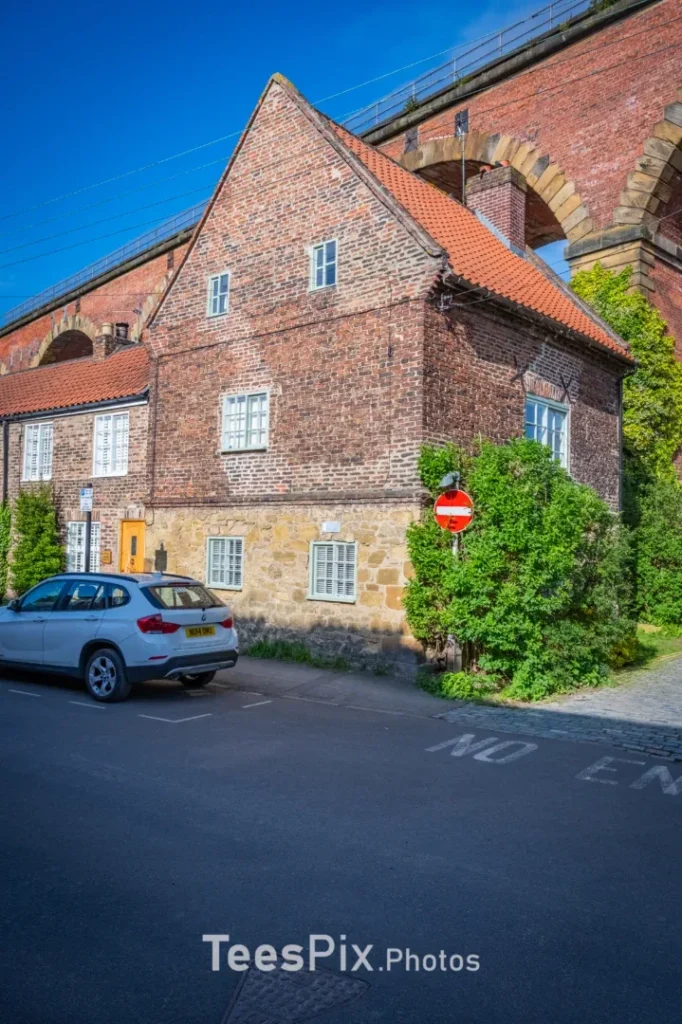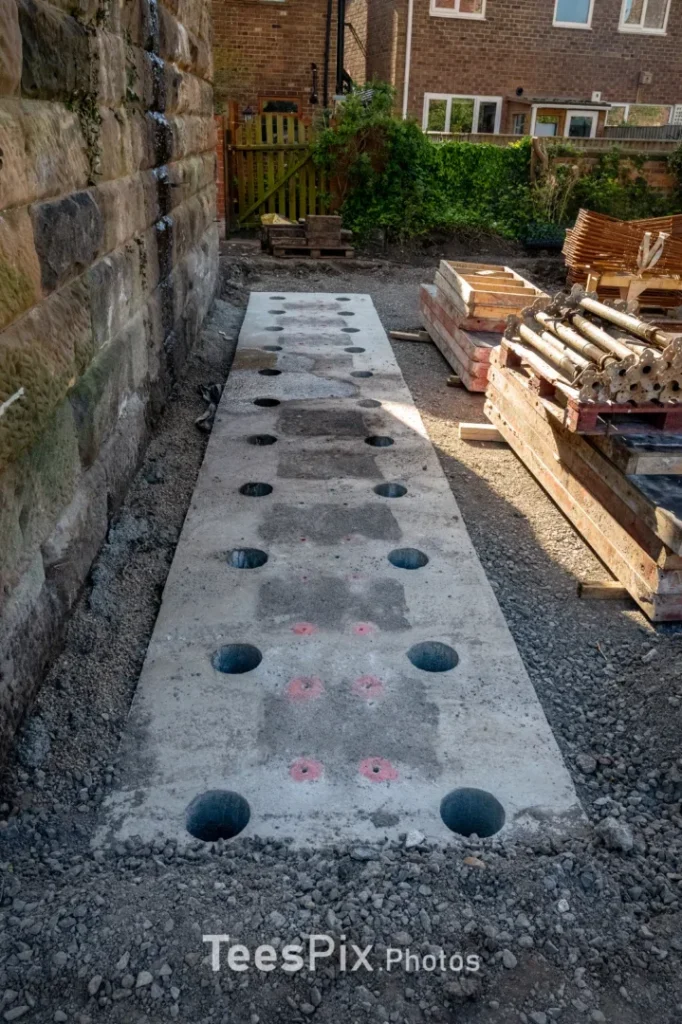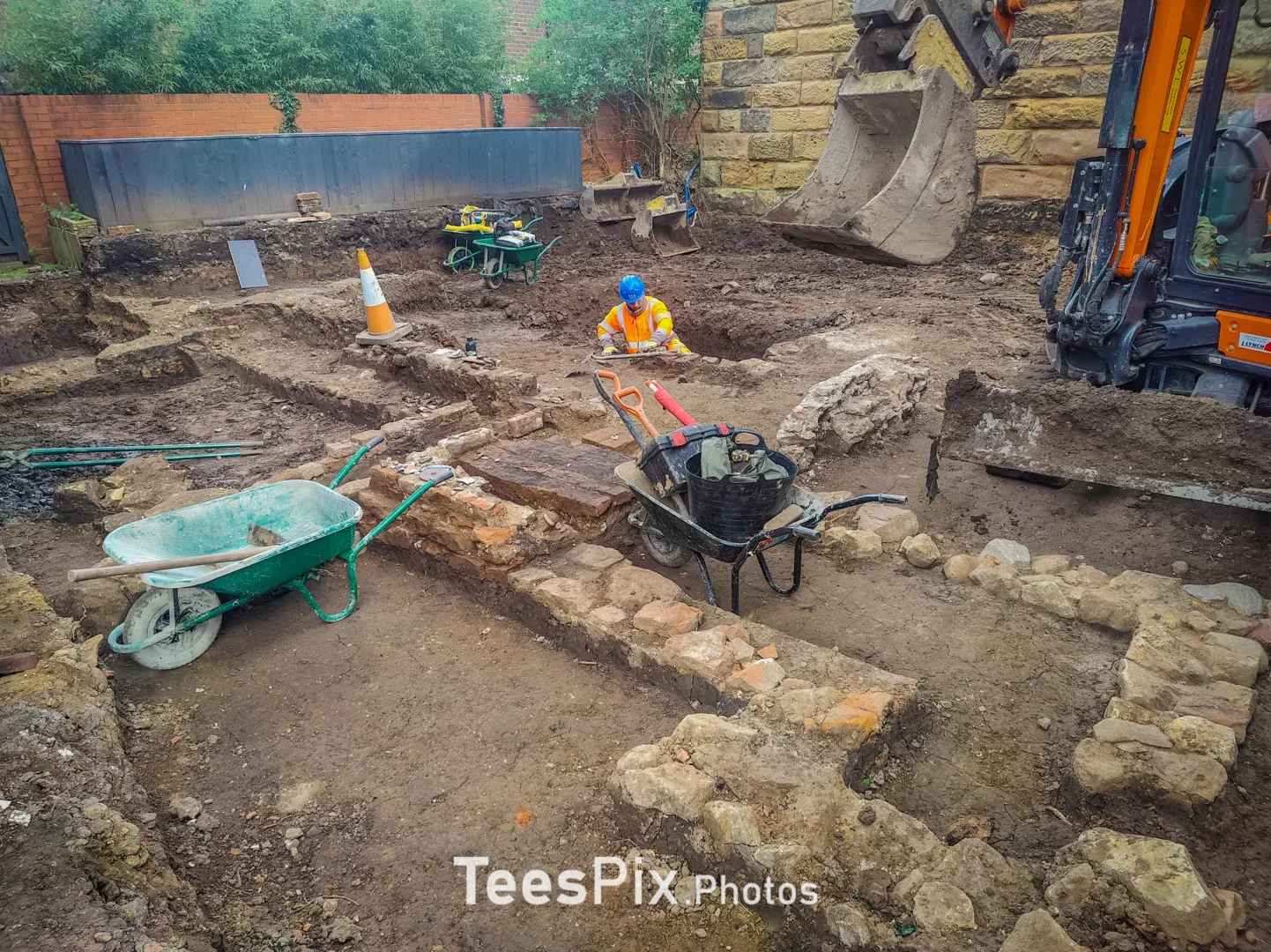The ongoing structural work on the historic Yarm Viaduct has led to the unexpected discovery of archaeological remains dating back centuries. A team of experts from Pre-Construct Archaeology, working alongside the Amco Giffen construction team, have uncovered a range of artefacts beneath viaduct arch number 13.
Discoveries Beneath the Viaduct
The finds include an old well, a wall constructed with bricks from approximately 1700, and an even older stone wall pre-dating 1700. Additionally, archaeologists discovered house foundations and outbuildings predating the viaduct, along with domestic items such as pottery, glass, silver alloy and bottles spanning from 1700-1900.
In 16th and 17th century England, wells were the primary source of fresh water for drinking, cooking, and cleaning. Every household and village relied on these structures, as piped water wouldn’t become widespread until the 19th century. The old well discovered under arch 13 was brick lined.
16th/17th Century Building Revealed
A Network Rail spokesperson confirmed the discovery of the remains of a 16th/17th-century building found under arch 13 of the viaduct. Archaeologists determined that these foundations were part of a house extension that was demolished around the time of the viaduct’s construction. Interestingly, there’s evidence suggesting that the remaining portion of the house may have incorporated an additional story using brickwork that matches the viaduct.
Connections to Hope House
These archaeological finds are located behind Hope House on West Street, considered to be the oldest dwelling in Yarm. A portion of Hope House was demolished during the viaduct’s construction, and the unearthed remains potentially offer insights into the property’s past layout and how it was impacted by the viaduct’s presence.

About the Yarm Viaduct and its Renovations
The Yarm Viaduct, a masterpiece of Victorian engineering, was built between 1848 and 1852. This imposing structure with 43 arches carries the railway line between Northallerton and Newcastle over the River Tees.
The current strengthening works are essential to preserve the viaduct and ensure the safety of the rail network. Movement in the viaduct’s foundations over time has necessitated intervention. Engineers are carefully underpinning the viaduct, installing steel needle beams into the piers. These beams rest on reinforced concrete pile caps supported by sturdy piles that redistribute the structure’s weight and offer long-term stability.

The original timber foundations of the Yarm Viaduct have proven vulnerable over time. Prior additions like the 1930s brick arch ribs and buttresses illustrate the continuous care this essential infrastructure demands. This current project ensures the viaduct’s continued service for years to come.
Hope House: A Yarm Treasure
Hope House, a Grade II listed building on Yarm’s West Street, is steeped in local history. With parts of the house dating back to the 16th century, it’s a cherished piece of Yarm’s heritage.
Ongoing Exploration
Archaeologists are continuing to work with Network Rail to uncover more details about these fascinating finds. They are currently cleaning the soil around the 16th/17th-century structure, preparing for further excavations this coming week.





















